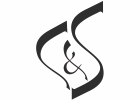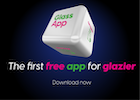Alongside especially energy-efficient, smart and CO2-saving products bird protection is a key component of sustainable building. This is also reflected in a rising number of exhibitors addressing this topic at the forthcoming glasstec (22 - 25 October 2024, Düsseldorf). ‘glass technology live’, the special show of the glass industry’s world-leading trade fair, will showcase a promising new development along with many other innovations: the Fraunhofer Institute for Solar Energy Systems ISE (Freiburg) has developed a highly efficient bird-friendly glass, which was only hit by 4% of birds in a flight tunnel test. At the same time, the Freiburg developers minimised transparency loss from the inside.
Highly effective bird protection without changing the visual properties of glass is not yet possible using current technology. Effective protection is provided by grids of dots measuring 9 -12 millimetres in diameter, spaced 90 to 100 millimetres apart and consisting of metallic coatings that create bright reflections on less reflective glass – making for stark contrasts in optimum spectral ranges for birds. The Freiburg researchers are also using a dot grid that is highly reflective when viewed from the outside. What is special here is that the coating applied by PVD (physical vapour deposition) boasts extraordinarily high transparency from the inside. It transmits approximately 70% of visible daylight and therefore causes hardly any shadowing. Dr. Thomas Kroyer, Head of Group Coating Technology and Systems at Fraunhofer ISE, considers his institute’s new development above all an important step towards solving the conflict between a dot grid, which is easy to discern for birds, and the visual impression when looking out of the window: “Over several years of research we have continued to develop the approach we already patented in 2019 with the aim of obtaining bird-friendly glass with the highest invisibility possible from inside and the maximum visibility for birds. We are now working hard to put this into practice. However numerous tests are still running.”
This also includes time-consuming certification, as Kroyer explains. After all, manufacturers of new products are expected to submit test reports for flight tunnel tests to prove suitability as bird-friendly glass. However, currently there are only two institutions worldwide performing these tests, meaning long waiting times for new product certification: in the USA the American Bird Conservancy ABC, which operates a flight tunnel in cooperation with the Powdermill Aviation Research Center PARC, and in Europe the “Biologische Station Hohenau-Ringelsdorf” in Austria, which also performed the tests for Fraunhofer ISE. For European manufacturers and institutes this often means waiting over a year to test new bird-friendly glass or a new bird-friendly assembly; this is also because the capacity of a flight tunnel depends on natural limitations like the seasons. In both tunnels so-called selection tests are carried out: a minimum of 80 birds of different species are placed in the dark part of the tunnel and instinctively flee to the light. Placed at the bright end is the marked screen to be tested and a clear reference screen. The birds select which one they fly to but are caught safely by special nets before they strike the screens. The effectiveness of the bird-friendly glass is inferred from the percentage of flight directions.
For Europe Hohenau is the “de facto” standard. Many manufacturers producing for the international market are concerned that test conditions have not been standardised so far; while Hohenau tests transparency and reflection, ABC only tests transparency. ABC already rates glass as bird friendly / effective when less than 30% of birds select the marked screen while for Hohenau the highest category A “highly efficient / unconditionally recommended” is only achieved with less than 10%. As a rule, building authorities in the USA require bird friendly / effective classification according to ABC and there is explicit legislation for this in many places. Moreover, solutions are defined that can be copied/rebuilt and automatically receive approval to reduce waiting times. In Germany, however, nature conservation associations are advocating that only the highest category A pursuant to the stricter Hohenau scheme should be accepted. Furthermore, the effectiveness of each individual product should be tested; it is not sufficient therefore that the glass has specific design properties that are known to be bird-friendly and are generally known from earlier tests. To probably simplify and shorten the process in future the “Bundesverband Flachglas e.V.” (German Flat Glass Manufacturers’ Association) is currently working on a sheet of guidelines for the use of bird-friendly glass in its working party “Bird-friendly Glass”. In the long term, the aim is to also define rules setting out which modified assembly tests once performed might be accepted or not in future.
Visitors can find out more about this topic and many other technological innovations at glasstec from 22 - 25 October 2024 and its special show ‘glass technology live’ in Düsseldorf.


























